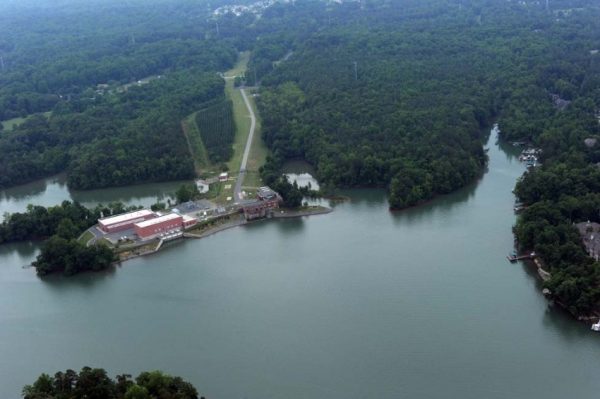Investing in North Carolina’s Green Infrastructure

Among the many state programs whose futures hang in the balance as North Carolina’s leadership wrestles with how to close the state’s projected budget shortfall are the four “trust funds” that have served as the primary sources of funding for land conservation over the past few decades. As leaders debate their future, a new report released by the Trust for Public Land (TPL) earlier this week demonstrates that the return on investment of these programs since 1998 has been significant.
The TPL study looked at the investments made to land conservation by the following state-funded programs: Agricultural Development and Farmland Preservation Trust Fund, Clean Water Management Trust Fund, Natural Heritage Trust Fund, and Parks and Recreation Trust Fund. These programs have supported some of the Charlotte region’s most significant open space protection accomplishments of recent years, including the protection of land around Mountain Island Lake (the drinking water supply for Mecklenburg and Gaston counties), support of the regional Carolina Thread Trail, the preservation of dairy farms in Iredell and Rowan counties, and the establishment of numerous local parks throughout the region. In fact, the success of these four programs has earned North Carolina a reputation as one of the most progressive southern states in the protection of its natural resources.
 According to the TPL report, a combined $825 million in investments from the four trust funds between 1998 and 2010 resulted in the protection of 289,000 acres across North Carolina. By looking at the goods and services generated from these lands since their protection, as well as ten years into the future, researchers estimated their total economic value at $3.67 billion. In other words, for every $1 invested in land conservation by the four trust funds, $4 in economic value was generated – and that doesn’t even include the value of these permanently-protected lands beyond the ten-year future time horizon of the study. The report goes on to classify and describe those economic benefits according to several categories of “natural goods and services,” including: drinking water protection, flood control, tourism and outdoor recreation, agriculture, and forestry.
According to the TPL report, a combined $825 million in investments from the four trust funds between 1998 and 2010 resulted in the protection of 289,000 acres across North Carolina. By looking at the goods and services generated from these lands since their protection, as well as ten years into the future, researchers estimated their total economic value at $3.67 billion. In other words, for every $1 invested in land conservation by the four trust funds, $4 in economic value was generated – and that doesn’t even include the value of these permanently-protected lands beyond the ten-year future time horizon of the study. The report goes on to classify and describe those economic benefits according to several categories of “natural goods and services,” including: drinking water protection, flood control, tourism and outdoor recreation, agriculture, and forestry.
At a luncheon in Raleigh on February 23 to announce the findings of the study, numerous officials touted the importance of land conservation to North Carolina’s economic well-being. These speakers demonstrated a bipartisan commitment to open space protection, from former NC Governor Jim Martin (a Republican) to current Lt. Governor Walter Dalton (a Democrat). One of the speakers was Mayor Karl Dean of Nashville, TN, who shared his city’s experience with the devastating floods of last year along the Cumberland River, noting the importance that land conservation plays not only in mitigating the effects of flooding, but also in promoting the general health of a city’s residents by creating opportunities for recreation. While he acknowledged the economic value experts attach to these benefits of land conservation, he also emphasized that it’s “just the right thing to do . . . you build a great city by attracting talented people, and they are attracted to beautiful places.”
To see a full copy of the report, titled North Carolina’s Return on the Investment in Land Conservation, go to www.tpl.org/northcarolinaanalysis.
Photographs by Nancy Pierce